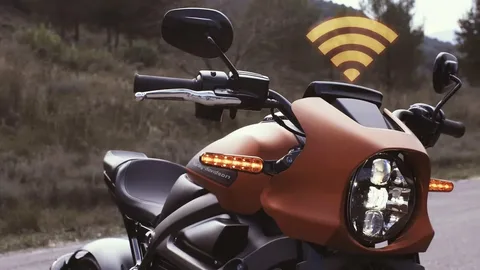The Rise of IoT in Motorcycles: A New Era for Riders in the US

Introduction
The US connected motorcycle market is transforming the two-wheeler experience by integrating advanced connectivity, safety, and performance features. These motorcycles are equipped with IoT-enabled systems, real-time diagnostics, and vehicle-to-everything (V2X) communication that enhance both rider safety and comfort. As connectivity becomes central to automotive innovation, motorcycles are following the same path as cars — evolving into intelligent machines capable of data exchange, remote monitoring, and predictive maintenance. The demand for smart, connected mobility in the US is rising rapidly, supported by tech-savvy consumers, improved network infrastructure, and growing safety awareness among motorcyclists.
Market Drivers
One of the major drivers of the US connected motorcycle market is the growing emphasis on rider safety. Connected motorcycles use technologies like advanced telematics, emergency call systems (eCall), anti-theft tracking, and adaptive cruise control to protect riders on the road. The increasing adoption of 4G/5G connectivity and GPS systems has enabled real-time location tracking, remote diagnostics, and seamless navigation. The rise of electric motorcycles further accelerates market growth, as connectivity supports battery management, range prediction, and software updates. Moreover, increasing consumer demand for enhanced performance analytics and smartphone integration continues to fuel the shift toward connected two-wheelers in the US.
Market Challenges
Despite promising growth, the connected motorcycle market faces several challenges. The high cost of integration and premium pricing of connected bikes limit mass adoption, particularly among entry-level riders. Cybersecurity risks also remain a concern, as connected motorcycles rely heavily on wireless networks that could be vulnerable to hacking. In addition, maintaining reliable connectivity in remote or low-network areas can impact performance. The complexity of integrating multiple sensors, communication modules, and infotainment systems increases manufacturing costs and requires continuous software updates. Moreover, regulatory standardization for connected two-wheelers is still evolving, slowing full-scale implementation across all brands.
Market Opportunities
The rise of smart cities and IoT-based mobility ecosystems opens vast opportunities for connected motorcycles in the US. Manufacturers are increasingly collaborating with tech firms to develop integrated V2X communication systems that enable real-time interaction between motorcycles, other vehicles, and road infrastructure. This enhances situational awareness and reduces accident risks. The growth of subscription-based services like remote diagnostics, predictive maintenance alerts, and location-based assistance presents additional revenue streams. Integration of AI-driven analytics, voice assistants, and augmented reality (AR) dashboards offers opportunities to improve the riding experience. Furthermore, fleet operators and ride-sharing companies can leverage connected motorcycles for operational optimization and rider safety management.
Regional Insights
The connected motorcycle market in the US shows strong growth potential across major states such as California, Texas, and Florida. California, known for its technological innovation and motorcycle culture, leads adoption with a focus on electric and smart mobility solutions. The presence of leading motorcycle manufacturers and startups developing connected systems strengthens the market. Texas and Florida, with their large two-wheeler user base, are witnessing growing interest in GPS-enabled and telematics-based motorcycles. Northern states, particularly Michigan, are investing in R&D collaborations for V2X integration and testing autonomous-ready motorcycle prototypes. The West Coast, overall, is emerging as the innovation hub for connected two-wheeler technologies in the US.
Future Outlook
The future of the US connected motorcycle market is closely tied to advancements in 5G, AI, and cloud-based telematics. In the coming decade, connected motorcycles will become integral to intelligent transportation networks, capable of interacting with other vehicles, pedestrians, and infrastructure. Features like adaptive hazard warning, blind-spot detection, and over-the-air (OTA) software updates will become standard. AI algorithms will enhance predictive maintenance and performance optimization, while immersive AR-based heads-up displays will redefine rider interfaces. As the technology matures and production costs decline, connected motorcycles are expected to penetrate mainstream markets, making advanced safety and connectivity accessible to a wider rider base.
Conclusion
The US connected motorcycle market represents a major leap toward smarter, safer, and more efficient two-wheeler mobility. With advancements in IoT, telematics, and network connectivity, motorcycles are evolving from mechanical machines into intelligent mobility platforms. While high costs and cybersecurity remain challenges, innovation and partnerships between automakers and tech firms are paving the way for rapid adoption. As infrastructure improves and digital ecosystems expand, connected motorcycles will play a vital role in the future of mobility — ensuring riders not only travel faster but also smarter and safer.


